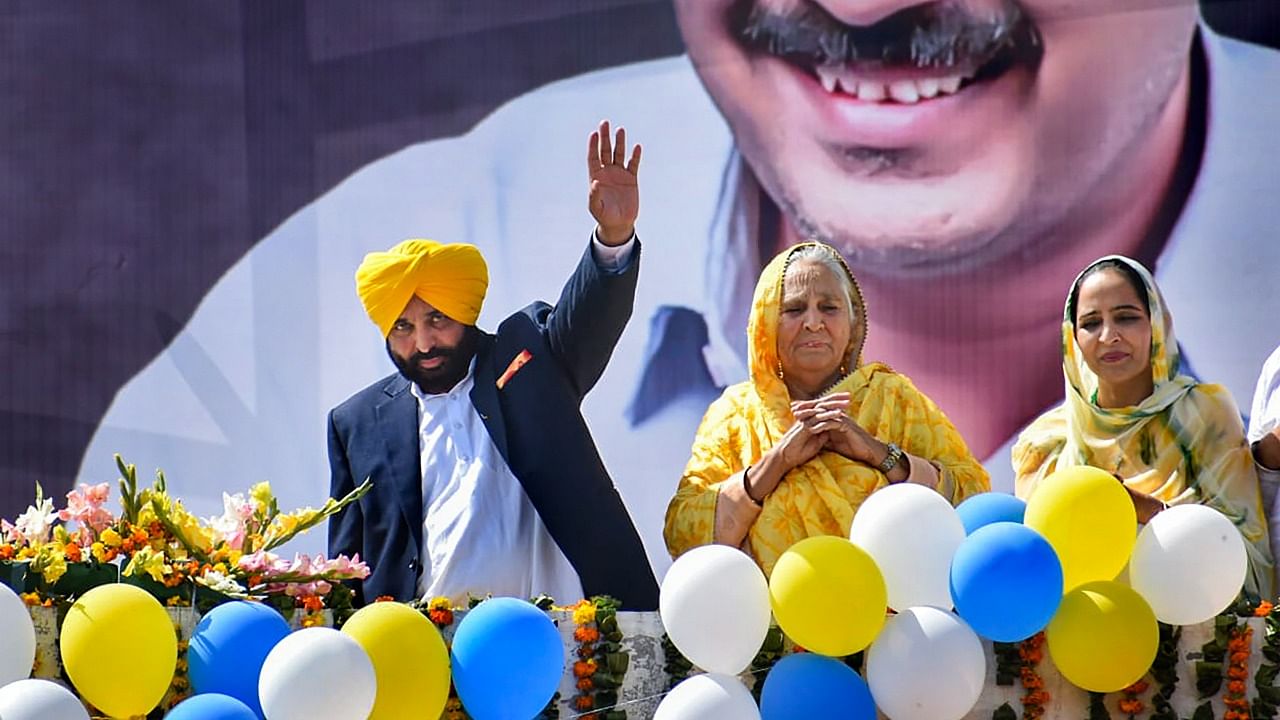
The electoral tide that swept over Punjab was so spectacular that it dazzled even the Aam Aadmi Party (AAP) leaders who rode it. That is clear from the remark of a leader that the people of the state used a vacuum cleaner while the party had only expected a clean-up with a broom. The party secured 92 seats out of 117, leaving only 17 seats for the incumbent Congress. Punjab has till now seen a bipolar contest between the Congress and the Akalis, but it has now become multipolar. It was the sudden turn to multipolarity that pushed AAP’s seats from 20 in 2017 to 92 while its vote share increased from 23.7% to about 42%. The vote shares of the Congress and the Akalis at 23% and 20%, respectively, are not as bad as their seat tallies of 18 and 3 would indicate, either. AAP befitted much from an unusual confluence of the electoral and political circumstances in the state.
Until late last year, the Congress was expected to win the election, though with a smaller majority. The Akali leaders remained tainted by many longstanding corruption charges and weakened by the break-up of their alliance with the BJP over the farm laws issue. While there was some anti-incumbency sentiment against the Amarinder Singh government, the sudden removal of the Chief Minister by the party’s central leadership and the appointment of the maverick Navjot Singh Sidhu as state unit president hurt the party. The calculation that the appointment of Charanjit Singh Channi would bring Scheduled Castes’ votes to the party also proved wrong. The late announcement of Channi as the CM candidate did not help and only worsened the situation, with Sidhu taking potshots against him in public every day. AAP, which promised a clean and efficient administration, offered a number of fresh and credible faces and presented a governance model with a focus on health, education, etc., which had yielded results in Delhi, emerged as an alternative in this situation, and the voters went for it.
Punjab is a state with failing industry and agriculture, and it faces serious problems like widespread drug abuse and unemployment. It will not be easy to implement in a state a governance model that worked in a city. The huge mandate casts a big responsibility on the new government to be formed by Bhagwant Mann. AAP will have to rise to the challenge and live up to the high hopes it has aroused. Though in theory it may have more freedom of action than its government in Delhi, it will have to be prepared for interference and obstruction from the Centre. The party’s national plans may depend on its performance in Punjab.
Check out latest DH videos here